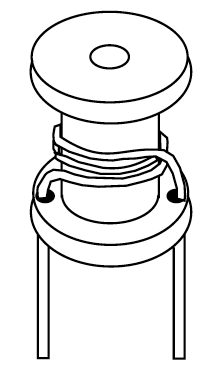AC Flux Density (Gauss)
Number of flux lines per unit of cross-sectional area generated by an alternating magnetic field.
Air Core Coil
The term “air core coil” describes an inductor that does not use a magnetic core made of a ferromagnetic material. The coils are wound on plastic, ceramic, or other nonmagnetic forms, as well as those that actually have air inside the windings.
Air Core Inductors (see Ceramic Core and Phenolic Core)
Alternating Current (AC)
Alternating Current describes the flow of charge that changes direction periodically. As a result, the voltage level also reverses along with the current.
Ambient Temperature
The temperature of still air immediately surrounding a component or circuit. A typical method to measure ambient temperature is to record the temperature that is approximately 1/2 inch from the body of the component or circuit.
Attenuation
The relative decrease in amplitude of a given parameter. Attenuation measurements are common for voltage, current and power. It is usually expressed in units of decibels (dB).
For a power ratio, one dB = 10 Log10 (P1/P2).
A dB is equal to 20 Log20 (I1/I2) for current and 20 Log10 (V1/V2) for voltage ratios.
Axial Inductor
An inductor constructed on a core with concentric leads on opposite ends of the core. Axial inductors are available for both power applications and RF applications, and are available in many core materials including the basic phenolic, ferrite and powdered iron types. Both rod and bobbin shapes are utilized. Axial inductors are very suitable for tape and reel packaging for auto placement. (see Inductor)




